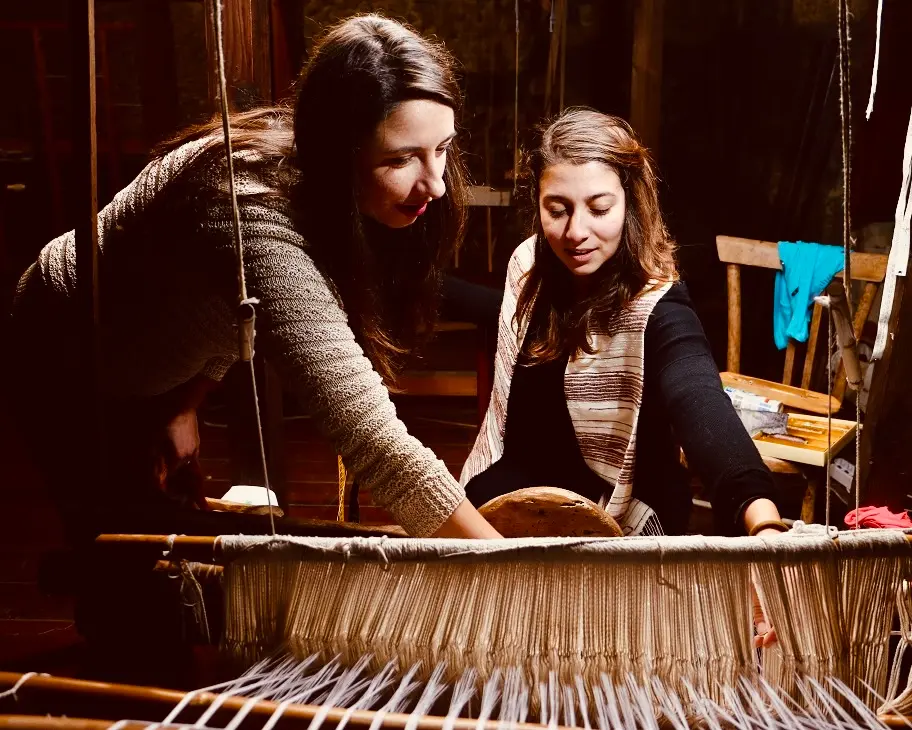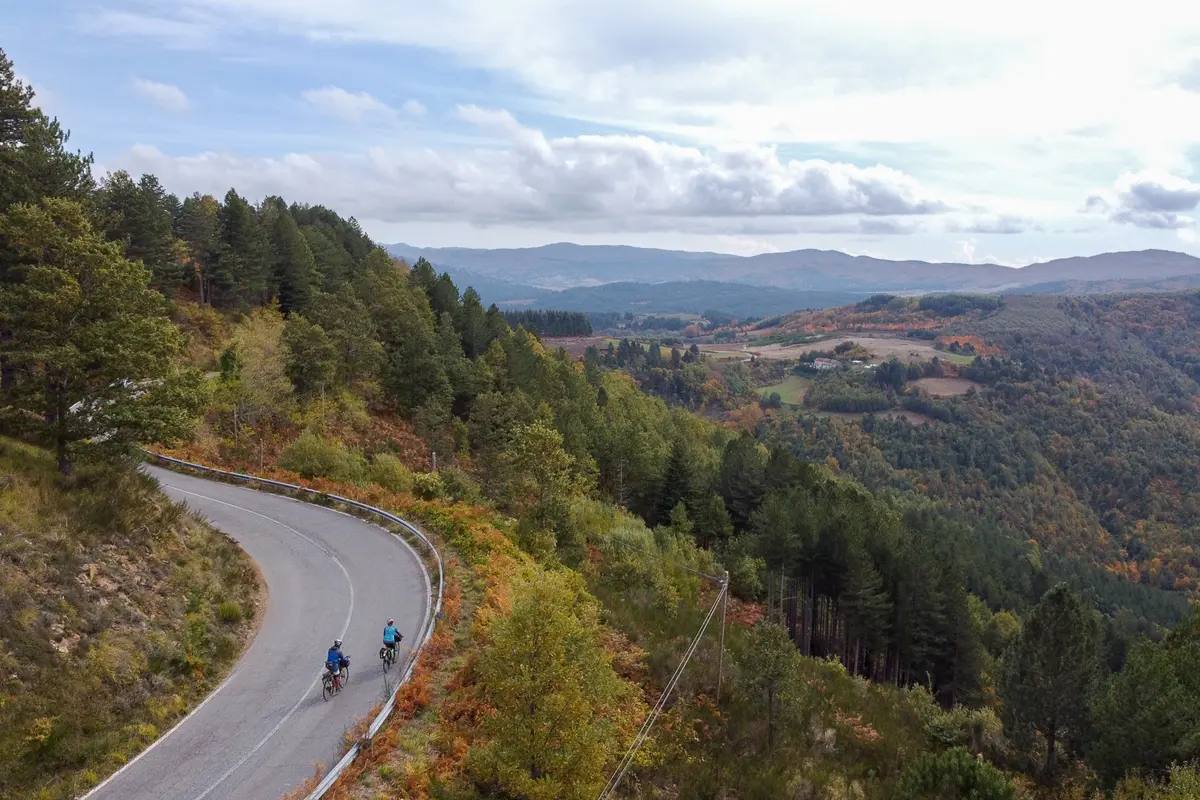Discovering Calabria's National Parks: Pollino, Sila, Aspromonte
Trekking in the National Parks in Calabria
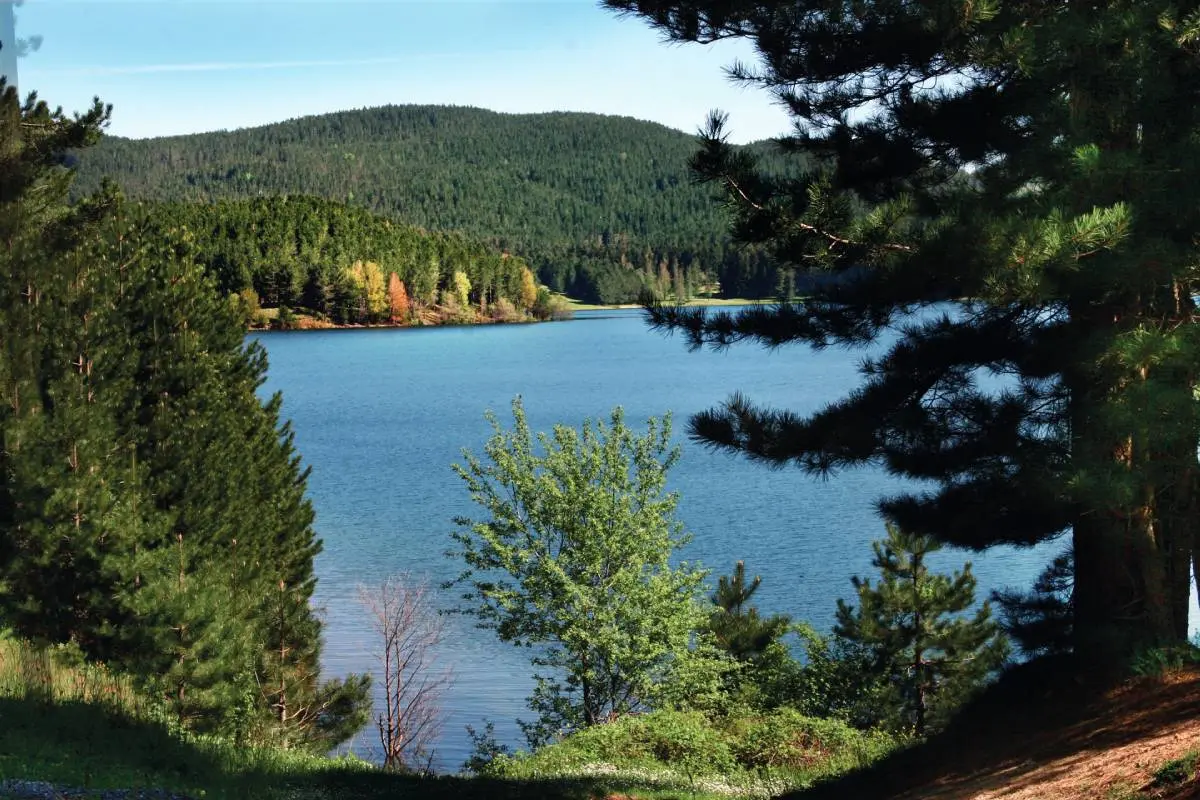
Sport and nature
Regione Calabria
A region and 3 National Parks to discover on your own or in the company of expert guides, on foot, by bicycle, on horseback and even in a hot-air balloon.
From the Pollino National Park to the Aspromonte National Park, via the Sila National Park and the countless nature reserves, Calabria is a green region in dialogue with the blue.
Here you can breathe the best air in Europe, ski overlooking the sea and marvel at the beauty of monumental trees, biospheres and UNESCO World Heritage geosites.
Pollino National Park
Our tour of Calabria's National Parks starts from the unspoilt heart of the Pollino Massif, in the province of Cosenza.
Covered by the foliage of the Pino Loricato, symbol of the park and a true "living fossil", we set off on a trek in the Pollino to discover the paths that lead to the summit of Serra Dolcedorme (the Queen of the South, reminiscent of the sinuous forms of a reclining woman). Natural paradises and jewel-like villages set among the rocks, traditions, folklore and ancient flavours. These are the thousand faces of the Pollino National Park, from the "plains" to the "greenhouses" above 2000 metres above sea level, passing through the enchanting river valleys.
With its almost 192,000 hectares, the Pollino National Park is the largest in Italy and, thanks to its endemic species, it is one of the UNESCO World Heritage Geoparks. For the variety of trails and sporting activities, the Pollino is an open-air gym in every season: from free climbing to rock climbing, to name the most adrenaline-pumping, to the many paths to explore on a pleasant bike ride, on foot or on horseback.
Among the cities, towns and the Most Beautiful Villages in Italy, one cannot miss Castrovillari, City of Carnival; Civita and the other villages of the Arbëreshë (Italo-Albanian) tradition; Morano Calabro, the Pollino Crib. The gastronomic excellences of the Pollino? The unfailing peperoni cruschi (shared with the Lucanian side), the Pollino Truffle, Mormanno Lentils and Cerchiara Bread.
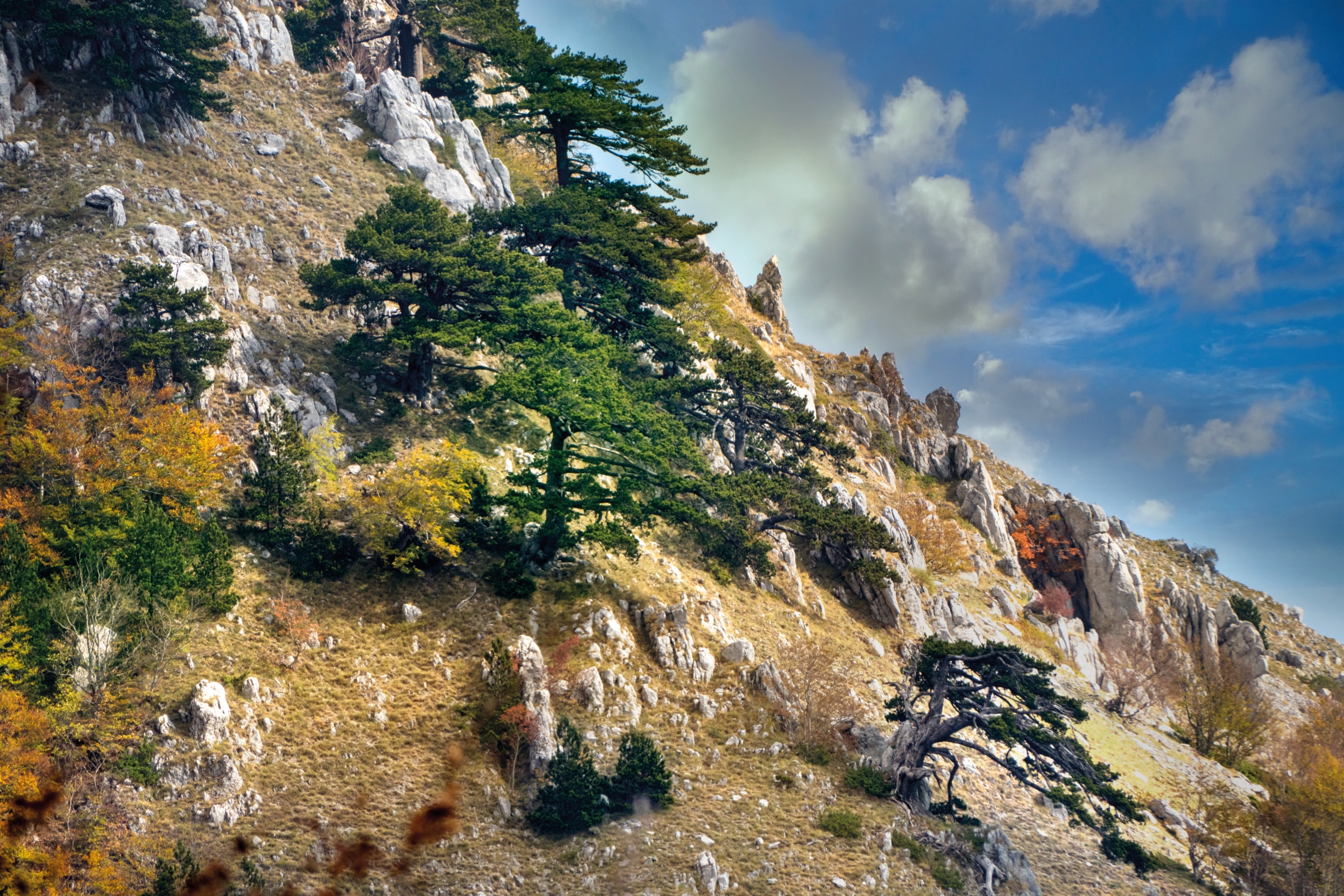
Sila National Park
Green holidays in Calabria continue in the Sila National Park, a UNESCO Biosphere Reserve where the best air in Europe has been certified. A paradise spread over three provinces: Cosenza, Catanzaro and Crotone (Sila Grande, Sila Greca and Sila Piccola) whose symbol is the Sila Wolf.
Inside the park, there are numerous reserves, visitor centres and CAI (Italian Alpine Club) Paths that can be followed by expert hikers and simple walkers for a length of 70 km and 123 different paths. Not to be missed? The Fallistro Nature Reserve, with its famous Sila Giants (monumental Larch Pines) and the Valli Cupe Regional Park, with its breathtaking waterfalls and the second largest canyon in Europe.
The Catanzaro side offers the thrill of feeling in an authentic high-altitude Tyrolean village by visiting Villaggio Mancuso, the most evocative of the residences in Sila, built by the entrepreneur of the same name in the 1960s with huts and fairy-tale buildings, such as the iconic Albergo delle Fate.
The Cosenza side of Sila offers the ski resorts of Camigliatello Silano and Lorica. There are 5 lake basins in the park that can be enjoyed in every season (Cecita, Ampollino, Arvo, Ariamacina and Votturino).
The Crotone side of Sila slope offers the hospitality and skiing facilities of Villaggio Palumbo, and then slopes down towards the Ionian Sea and the lunar landscape of the Cutro Calanchi (Marchesato).
The most important Sila villages include Taverna and the Mattia Preti Museum, the Florense Abbey in San Giovanni in Fiore and the Franciscan Convent in Spezzano della Sila. Among the typical products from the Sila region to be sampled are the Sila Potato PGI, Caciocavallo Silano PDO and Podolica beef.
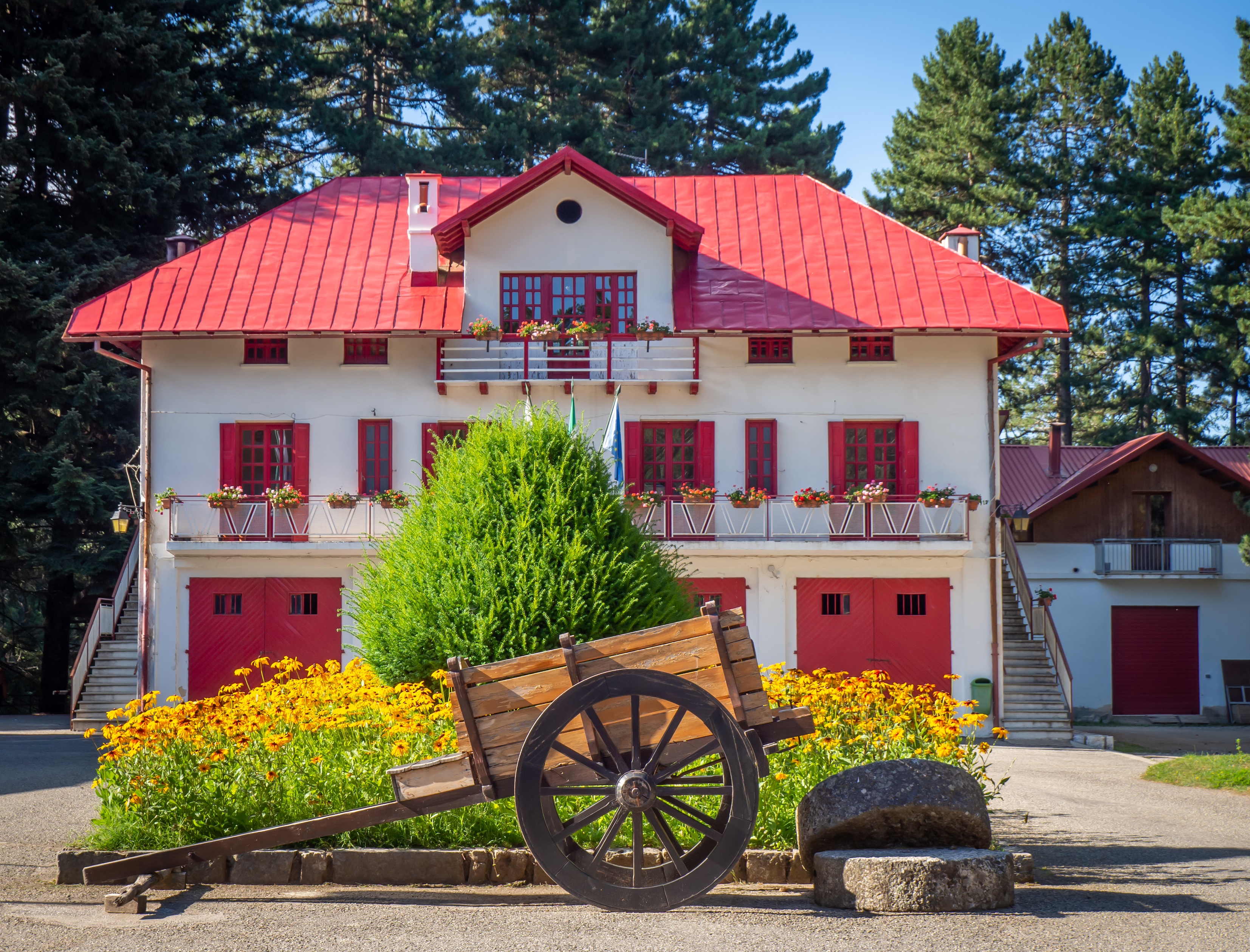
Aspromonte National Park
At the extreme tip of the region, in the province of Reggio Calabria, rises his majesty the Aspromonte National Park. From its peaks and the ski facilities of Gambarie d'Aspromonte, it is possible to "ski with a sea view".
Different from the rest of the Italian Apennine ridge in terms of geology and morphology, the Aspromontano Massif offers uniquely evocative scenery, starting with the Valley of the Great Stones, part of the UNESCO World Heritage Geosites. Among the most spectacular monoliths are Pietra Cappa, Rocche di San Pietro, Caldaie del Latte and Rocca del Drago.
Among the paths not to be missed there are the English Path, inspired by the Grand Tour of Edward Lear and other illustrious visitors of the time, and the itinerary through the "Corrado Alvaro" Literary Park, in the footsteps of the writer originally from San Luca. Also of literary interest for being the birthplace of another important national writer, Saverio Strati, is the town of Sant'Agata del Bianco.
The Aspromonte National Park includes some of the Greek villages of Calabria (ancient Greek-speaking communities) and the so-called ‘’ghost villages‘’. Among these Bova, one of the Most Beautiful Villages in Italy, capital of the Bovesìa; Roghudi and Pentedattilo, where gloomy legends echo. One cannot leave Aspromonte without having tasted its traditional cheeses: Musulupu d'Aspromonte (of Greek-Albanian origin) and Caprino dell'Aspromonte (both PAT branded).
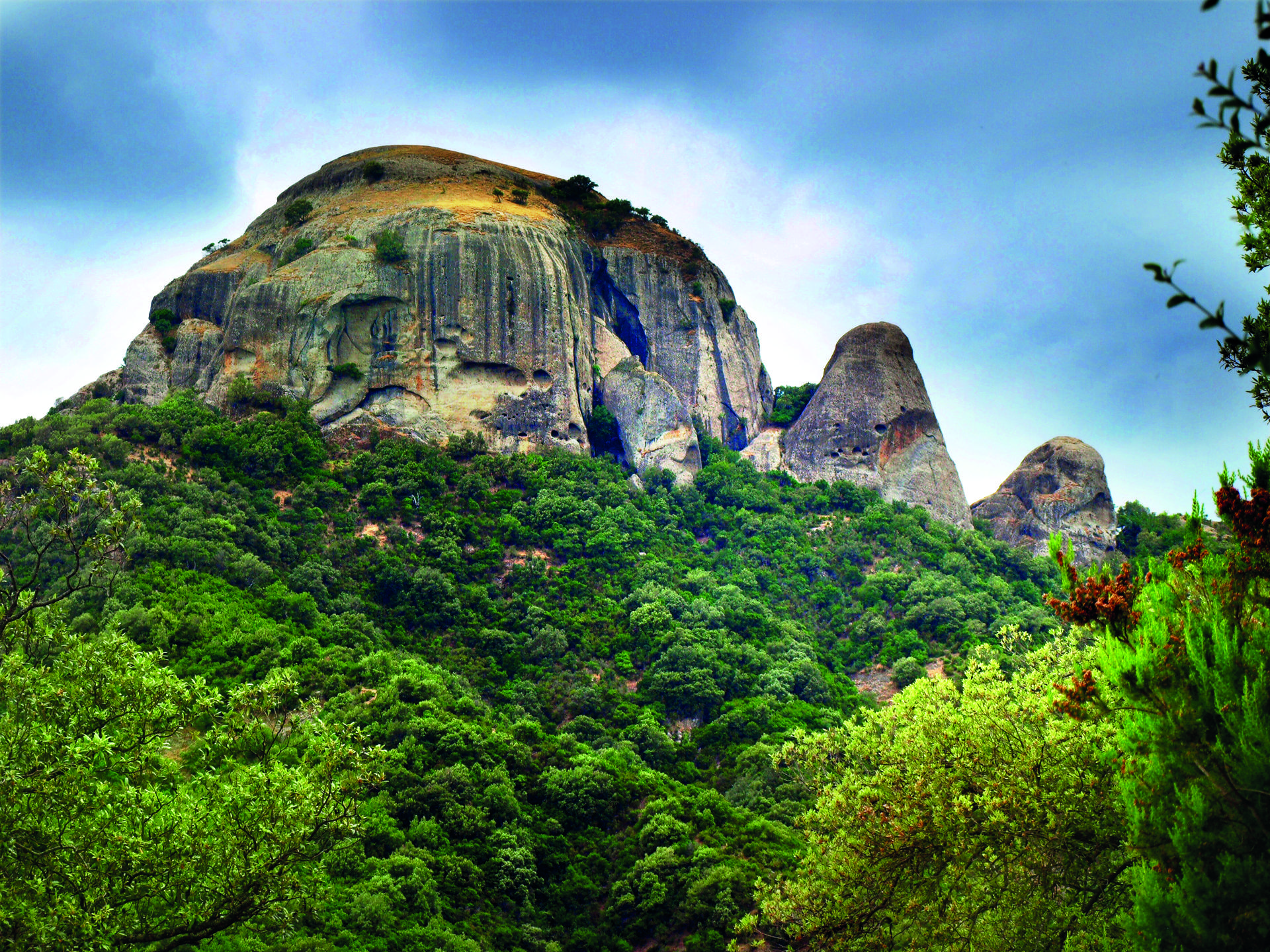
https://calabriastraordinaria.it/en/news/discovering-calabrias-national-parks-pollino-sila-aspromonte


